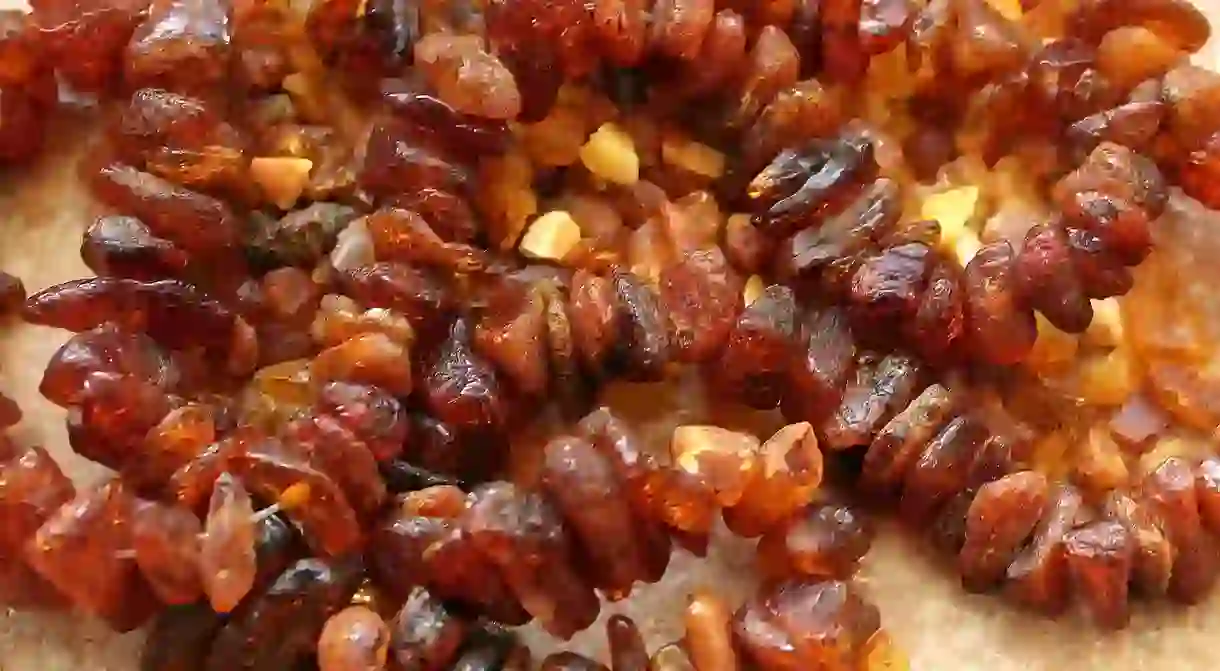How to Buy Amber in Russia

When looking for a souvenir that is not a fridge magnet and is a bit more unique than what’s sold on the shelves of tourist shops, amber is a great choice when visiting Russia. Not only is it appreciated by tourists and locals alike, it is also a historical artifact to invest in.
The origins of amber
In a nutshell, amber is fossilized tree resin. Around 40-50 million years ago, the amber-producing regions in the Baltics experienced a change in climate. The trees began growing in abundance and the warmth of the climate caused an increase in sap production. The resin seeping from trees was preserved in various places, usually in the ground. This sap solidified underground, where it stayed until it was discovered by humans. People used it mainly for decorative purposes, making jewelry, as well as everyday objects. Amber became highly valued and wasused as an object of trade.
While amber formed in various places around the world, the largest reserve was in Russia and is now located in the enclave city of Kaliningrad. About 90 percent of the world’s amber is found here.

Different colours of amber
Amber is a product of nature and comes in various colours depending on where it was preserved and how long ago it solidified. The most common colour of amber is a honey yellow, which means that it was found in the ground. The lighter the colour, the younger the amber is. If it has a very light colour, it is likely to be a copal – a resin younger than one million years. Copal is not as valuable as true amber and is cheaper on the market.
Amber with lots of green likely absorbed tree bark or grass on its way to the ground and preserved those colours.
Another different type of amber is milky or bony amber, which has a white, almost ivory hue. This amber owes its colour to hundreds or thousands of tiny bubbles that were captured within the resin. This type of amber is very popular in the Baltics.

The main price factors
There are many components that go into the price of amber. It is important to first consider the size: large chunks of amber are rare and valuable, so the price is likely to escalate depending on size and weight. The type of amber can also determine the price, but doesn’t affect it severely. Naturally, older pieces have more value than a piece of copal (the young resin mentioned earlier). Next, it is important to look at the shape. Sculptures and crafted pendants require more work from jewelers than just a simple polish on the outside, so the work should also be taken into account. Finally, inclusions, such small insects, also make a piece more valuable to a buyer.

Beware of the fakes
It’s no secret that fake amber can be found on the market and does often look similar to the real deal. The fakes are usually made of plastic, so there are definitely ways of making sure that a piece is genuine. A simple way to tell if the amber in question is legitimate is by heating it, but you’ll want to make sure you have the consent of the shop owners. At high temperatures, true amber will smell like a pine forest, whereas plastic amber will have a distinctive smell of burning plastic. For unpolished pieces of amber, rubbing it will be enough to produce the scent.
Another test is to float amber in salty water and then in fresh water. It will float in the first and sink in the latter, whereas plastic will sink in both cases. Finally, amber is prone to have imperfections, such as small cracks and air bubbles. You should be suspicious of an absolutely flawless piece of amber.














